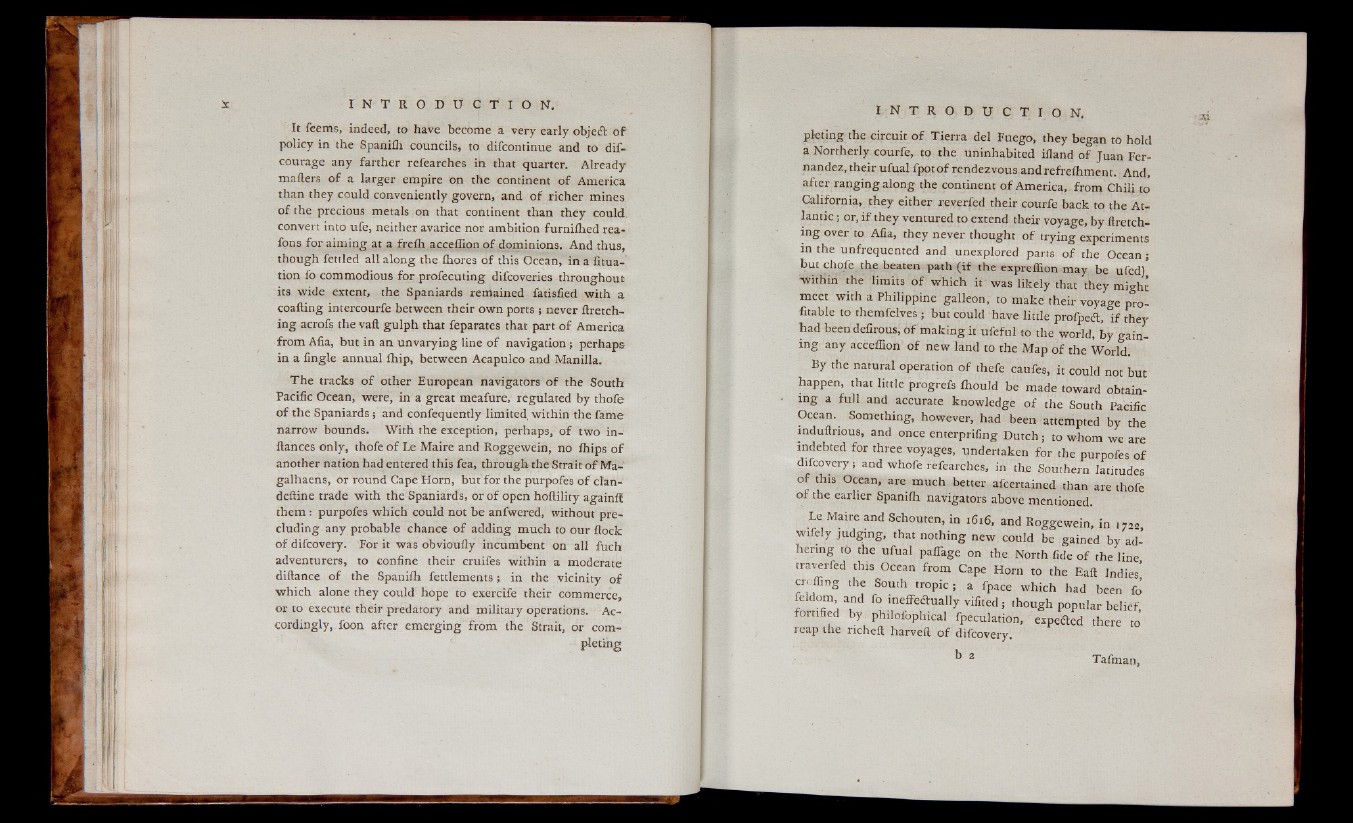
It feems, indeed, to have become a very early object o f
policy in the Spaniih councils, to difcontinue and to discourage
any farther researches in that quarter. Already
mailers of a larger empire on the continent of America
than they could conveniently govern, and of richer mines
of the precious metals on that continent than they could
convert into ufe, neither avarice nor ambition furnifhed rea-
fons for aiming at a freih acceflion of dominions. And thus,
though fettled all along the ihores o f this Ocean, in a fitua-
tion fo commodious for profecuting difcoveries throughout
its wide extent, the Spaniards remained Satisfied with a
coafting intercourse between their own ports ; never ftretch-
ing acrofs the vaft gulph that Separates that part o f America
from Afia, but in an unvarying line of navigation ; perhaps
in a fingle annual Ship, between Acapulco and Manilla.
The tracks o f other European navigators of the South
Pacific Ocean, were, in a great meafure, regulated by thofe
of the Spaniards; and consequently limited within the fame
narrow bounds. With the exception, perhaps, o f two instances
only, thofe of Le Maire and Roggewein, no fhips of
another nation had entered this fea, through the Strait of Ma-'
galhaens, or round Cape Horn, butTor the purpoies o f clandestine
trade with the Spaniards, or of open hoftility againft
them : purpofes which could not be anfwered, without precluding
any probable chance of adding much to our Stock
of difcovery. For it was obvioufly incumbent on all fuch
adventurers, to confine their cruifes within a moderate
diftance of the Spaniih fettlements; in the vicinity of
which alone they could hope to exercife their commerce,
or to execute their predatory and military operations. Accordingly,
foon after emerging from the Strait, or completing
r -— ~0 ------------- rucgu, mcy oegan to noia
a Northerly courfe, to the uninhabited ifland of Juan Fernandez,
their ufual Spot of rendezvous and refreshment. And,
after ranging along the continent o f America, from Chili to
California, they either reverfed their courfe back to the Atlantic
; or, i f they ventured to extend their voyage, by Stretching
over to Afia, they never thought o f trying experiments
in the unfrequented and unexplored parts o f the Ocean;
but chofe^ the beaten path (if the expreffion may be ufed)
within the limits of which it was likely that they might
meet with a Philippine galleon, to make their voyage profitable
to themfelves; but could have little profpeft, i f they
had been defirous, of making it ufeful to the world, by gaining
any accelfion of new land to the Map of the World.
By the natural operation o f thefe caufes, it could not but
happen, that little progrefs Should be made toward obtaining
a full and accurate knowledge of the South Pacific
Ocean. Something, however, had been attempted by the
mduftrious, and once enterprifing Dutch; to whom we are
indebted for three voyages, undertaken for the purpofes of
difcovery; and whofe refearches, in the Southern latitudes
of this Ocean, are much better ascertained than are thofe
of the earlier Spaniih navigators above mentioned.
Ee Maire and Schouten, in 1616, and Roggewein, in i ; 22,
wifely judging, that nothing new could be gained by adhering
to the ufual paSTage on the North fide of the line,
traverfed this Ocean from Cape Horn to the Eaft Indies
croffing the South tropic; a fpace which had been fo
feldom and fo ineffectually vifited; though popular belief,
fortified by. philofophical fpeculation, expected there to
reap the riche ft harveft of difcovery.
k 2 Tafman,